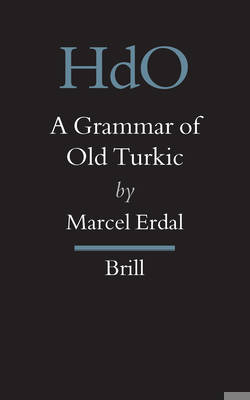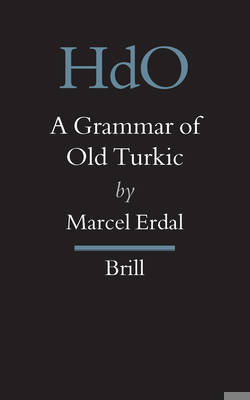
- Afhalen na 1 uur in een winkel met voorraad
- Gratis thuislevering in België vanaf € 30
- Ruim aanbod met 7 miljoen producten
- Afhalen na 1 uur in een winkel met voorraad
- Gratis thuislevering in België vanaf € 30
- Ruim aanbod met 7 miljoen producten
Zoeken
Omschrijving
Old Turkic is the earliest, directly attested Turkic language. This original work describes the grammar of Old Turkic.
The language is documented in inscriptions in the 'runic' script in Mongolia and the Yenisey basin, from the seventh to the tenth century; in Uygur manuscripts from Chinese Turkestan in Uygur, and in runic and other scripts (comprising religious - mostly Buddhist -, legal, literary, medical, folkloric, astrological and personal material), from the ninth to the thirteenth century; and in eleventh-century Qarakhanid texts, mostly in Arabic writing.
All aspects of Old Turkic are dealt with: phonology, subphonemic phenomena and morphophonology, and the way these are reflected in the various scripts, derivational and inflectional morphology, grammatical categories, word classes, syntax, textual and extra-textual reference and other means of coherence, lexical fields, discourse types, phraseology as well as stylistic, dialect and diachronic variation.
The language is documented in inscriptions in the 'runic' script in Mongolia and the Yenisey basin, from the seventh to the tenth century; in Uygur manuscripts from Chinese Turkestan in Uygur, and in runic and other scripts (comprising religious - mostly Buddhist -, legal, literary, medical, folkloric, astrological and personal material), from the ninth to the thirteenth century; and in eleventh-century Qarakhanid texts, mostly in Arabic writing.
All aspects of Old Turkic are dealt with: phonology, subphonemic phenomena and morphophonology, and the way these are reflected in the various scripts, derivational and inflectional morphology, grammatical categories, word classes, syntax, textual and extra-textual reference and other means of coherence, lexical fields, discourse types, phraseology as well as stylistic, dialect and diachronic variation.
Specificaties
Betrokkenen
- Auteur(s):
- Uitgeverij:
Inhoud
- Aantal bladzijden:
- 588
- Taal:
- Engels
- Reeks:
- Reeksnummer:
- nr. 3
Eigenschappen
- Productcode (EAN):
- 9789004102941
- Verschijningsdatum:
- 28/07/2004
- Uitvoering:
- Hardcover
- Formaat:
- Genaaid
- Afmetingen:
- 169 mm x 247 mm
- Gewicht:
- 1165 g

Alleen bij Standaard Boekhandel
+ 1028 punten op je klantenkaart van Standaard Boekhandel
Beoordelingen
We publiceren alleen reviews die voldoen aan de voorwaarden voor reviews. Bekijk onze voorwaarden voor reviews.








